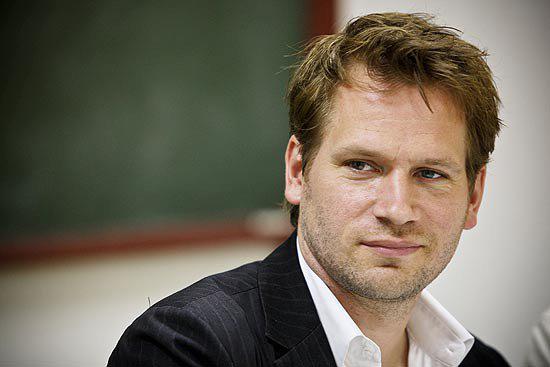Tales of Two Americas
“A penetrating multidisciplinary collection...Urgent, worthy reportage from our fractious, volatile social and cultural moment.”
- Kirkusabout the bookabout
America is broken. You don't need a fistful of statistics to know this. Visit any city, and evidence of our shattered social compact will present itself. From Appalachia to the Rust Belt and down to rural Texas, the gap between the wealthiest and the poorest stretches across gaping chasms. Whether the cause of this inequality is systemic injustice, the entrenchment of racism in our culture, the long war on drugs, or immigration policies, it endangers not only the American Dream but our very lives.
In Tales of Two Americas, some of the literary world's most exciting writers look beyond numbers and wages to convey what it feels like to live in this divided nation. Their extraordinarily powerful stories, essays, and poems demonstrate how boundaries break down when experiences are shared, and that in sharing our stories we can help to alleviate a suffering that touches so many people.
With Contributions From: Julia Alvarez, Eula Biss, Sandra Cisneros, Edwidge Danticat, Raymond Deeren, Natalie Diaz, Annie Dillard, Anthony Doerr, Timothy Egan, Patricia Engel, Ru Freeman, Roxane Gay, Dagoberto Gilb, Juan Felipe Herrera, Lawrence Joseph, Rickey Laurentiis, Kiese Laymon, Nami Mun, Manuel Muñoz, Joyce Carol Oates, Chris Offutt, Ann Patchett, Kirstin Valdez Quade, Jess Ruliffson, Karen Russell, Richard Russo, Sarah Smarsh, Danez Smith, Rebecca Solnit, Whitney Terrell, Hector Tobar, Claire Vaye Watkins, Brad Watson, Larry Watson, Joy Williams, and Kevin Young.
“Above all else, the anthology, full of pieces varied in tone and deeply personal perspectives, helps convey the reality of today's economic inequality in ways that an academic tome simply can't.” - Sheila Bapat, Feministing (about Tales of Two Cities edited by John Freeman)
About The Author / Editor
Preview
From the Foreword
Walk around any American city and evidence of a shattered compact with citizens will present itself. There you will see broken roads, overloaded schools, police forces on edge, clusters and sometimes whole tent cities of homeless people camped in eyeshot of shopping districts that are beginning to resemble ramparts of wealth rather than stores for all. Thick glass windows and security guards stand between aspirational goods and the people outside in Portland, Oregon, in San Francisco, in Seattle, Los Angeles, New York and Miami. The soaring cost of living in these cities—which have become Meccas for luxury and creative economy work, but depend on service labor to run their dream machines—has a lot to do with this state of affairs. Adjusting for rent and costs, the middle class residents of these cities now have the lowest real earnings of any metropolitan area.1 And across the nation at large, America's top ten percent earns nine times as much as the bottom ninety percent.2
This is not just an urban problem. In smaller cities and towns and in rural America the gulf between the haves and have nots stretches just as wide, even if its symptoms are not so visible. California might be home to over 100 billionaires-whose collected assets dwarf the GDP of most nations in the world—but nearly a quarter of the state is poor. The jobs which were once done by hand are increasingly done by machine. Appalachian regions, upstate New York, Texas‐inequality stretches to almost unthinkable gulfs here too. No matter how much one hears of recovery and new jobs, what those jobs are and what they promise tends to get left out. These jobs are often short shift work, work without benefits, work so temporary it has created a new term: the precariat.
Financial inequality is a not just a symptom of bad public policy, though. It has emerged from decades of injustice and structural inequality in America produced by the nation's growth on the back of stolen labor, the failure of reconstruction, the entrenchment of racial bias in the culture, restrictions on immigration and the way immigration law is enforced, the long aftermath of the war on drugs, sexism, gender imbalances, and the complicity of financial services in preying upon populations afflicted by these inequalities with predatory loaning. Whatever benefits the once robust welfare state ensured have been all but demolished by this deeply enmeshed system of inequality, putting far more at risk than just upward mobility. It has put people's bodies at risk. Writing in the wake of a lethal police shooting in Charlotte earlier this year, the pastor William Barber II noted: "When Charlotte's poor black neighborhoods were afflicted with disproportionate law enforcement during the war on drugs, condemning a whole generation to bad credit and a lack of job opportunities, our elected representatives didn't call it violence. When immigration officers raid homes and snatch undocumented children from bus stops, they don't call it violence. But all of these policies and practices do violence to the lives of thousands of Charlotte residents."
in the media
Tales of Two Americas
“A penetrating multidisciplinary collection...Urgent, worthy reportage from our fractious, volatile social and cultural moment.”
- Kirkusabout the bookabout
America is broken. You don't need a fistful of statistics to know this. Visit any city, and evidence of our shattered social compact will present itself. From Appalachia to the Rust Belt and down to rural Texas, the gap between the wealthiest and the poorest stretches across gaping chasms. Whether the cause of this inequality is systemic injustice, the entrenchment of racism in our culture, the long war on drugs, or immigration policies, it endangers not only the American Dream but our very lives.
In Tales of Two Americas, some of the literary world's most exciting writers look beyond numbers and wages to convey what it feels like to live in this divided nation. Their extraordinarily powerful stories, essays, and poems demonstrate how boundaries break down when experiences are shared, and that in sharing our stories we can help to alleviate a suffering that touches so many people.
With Contributions From: Julia Alvarez, Eula Biss, Sandra Cisneros, Edwidge Danticat, Raymond Deeren, Natalie Diaz, Annie Dillard, Anthony Doerr, Timothy Egan, Patricia Engel, Ru Freeman, Roxane Gay, Dagoberto Gilb, Juan Felipe Herrera, Lawrence Joseph, Rickey Laurentiis, Kiese Laymon, Nami Mun, Manuel Muñoz, Joyce Carol Oates, Chris Offutt, Ann Patchett, Kirstin Valdez Quade, Jess Ruliffson, Karen Russell, Richard Russo, Sarah Smarsh, Danez Smith, Rebecca Solnit, Whitney Terrell, Hector Tobar, Claire Vaye Watkins, Brad Watson, Larry Watson, Joy Williams, and Kevin Young.
“Above all else, the anthology, full of pieces varied in tone and deeply personal perspectives, helps convey the reality of today's economic inequality in ways that an academic tome simply can't.” - Sheila Bapat, Feministing (about Tales of Two Cities edited by John Freeman)
About The Author / Editor
Preview
From the Foreword
Walk around any American city and evidence of a shattered compact with citizens will present itself. There you will see broken roads, overloaded schools, police forces on edge, clusters and sometimes whole tent cities of homeless people camped in eyeshot of shopping districts that are beginning to resemble ramparts of wealth rather than stores for all. Thick glass windows and security guards stand between aspirational goods and the people outside in Portland, Oregon, in San Francisco, in Seattle, Los Angeles, New York and Miami. The soaring cost of living in these cities—which have become Meccas for luxury and creative economy work, but depend on service labor to run their dream machines—has a lot to do with this state of affairs. Adjusting for rent and costs, the middle class residents of these cities now have the lowest real earnings of any metropolitan area.1 And across the nation at large, America's top ten percent earns nine times as much as the bottom ninety percent.2
This is not just an urban problem. In smaller cities and towns and in rural America the gulf between the haves and have nots stretches just as wide, even if its symptoms are not so visible. California might be home to over 100 billionaires-whose collected assets dwarf the GDP of most nations in the world—but nearly a quarter of the state is poor. The jobs which were once done by hand are increasingly done by machine. Appalachian regions, upstate New York, Texas‐inequality stretches to almost unthinkable gulfs here too. No matter how much one hears of recovery and new jobs, what those jobs are and what they promise tends to get left out. These jobs are often short shift work, work without benefits, work so temporary it has created a new term: the precariat.
Financial inequality is a not just a symptom of bad public policy, though. It has emerged from decades of injustice and structural inequality in America produced by the nation's growth on the back of stolen labor, the failure of reconstruction, the entrenchment of racial bias in the culture, restrictions on immigration and the way immigration law is enforced, the long aftermath of the war on drugs, sexism, gender imbalances, and the complicity of financial services in preying upon populations afflicted by these inequalities with predatory loaning. Whatever benefits the once robust welfare state ensured have been all but demolished by this deeply enmeshed system of inequality, putting far more at risk than just upward mobility. It has put people's bodies at risk. Writing in the wake of a lethal police shooting in Charlotte earlier this year, the pastor William Barber II noted: "When Charlotte's poor black neighborhoods were afflicted with disproportionate law enforcement during the war on drugs, condemning a whole generation to bad credit and a lack of job opportunities, our elected representatives didn't call it violence. When immigration officers raid homes and snatch undocumented children from bus stops, they don't call it violence. But all of these policies and practices do violence to the lives of thousands of Charlotte residents."






